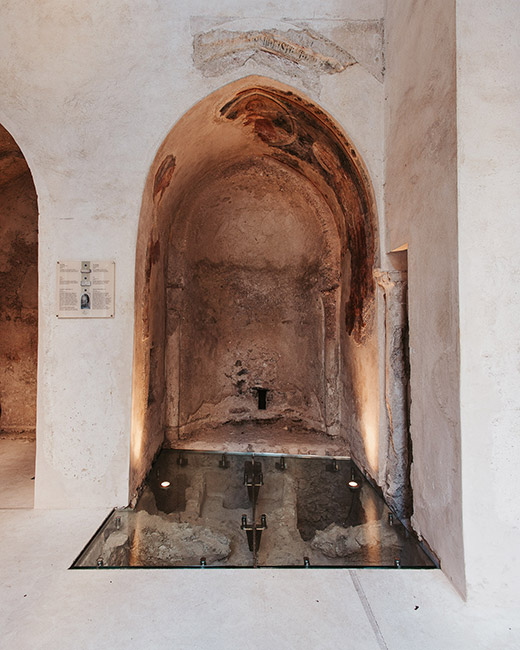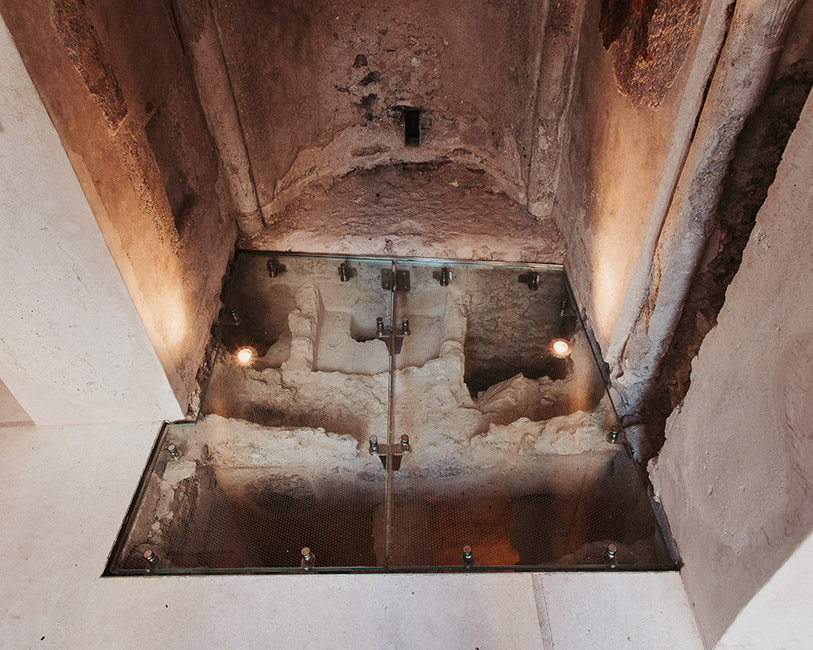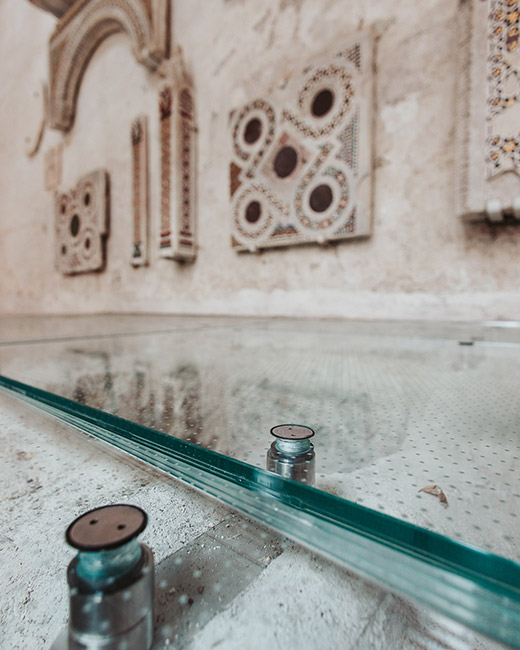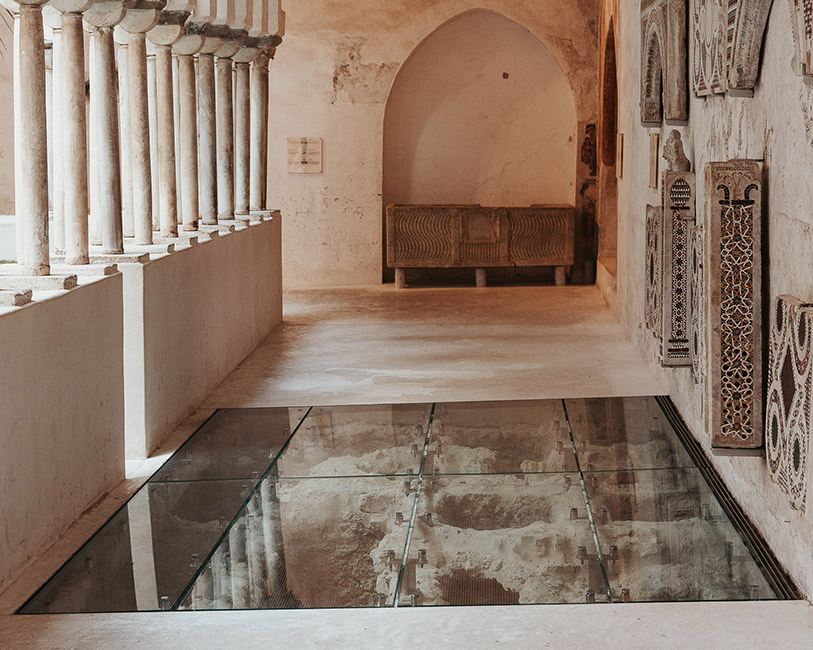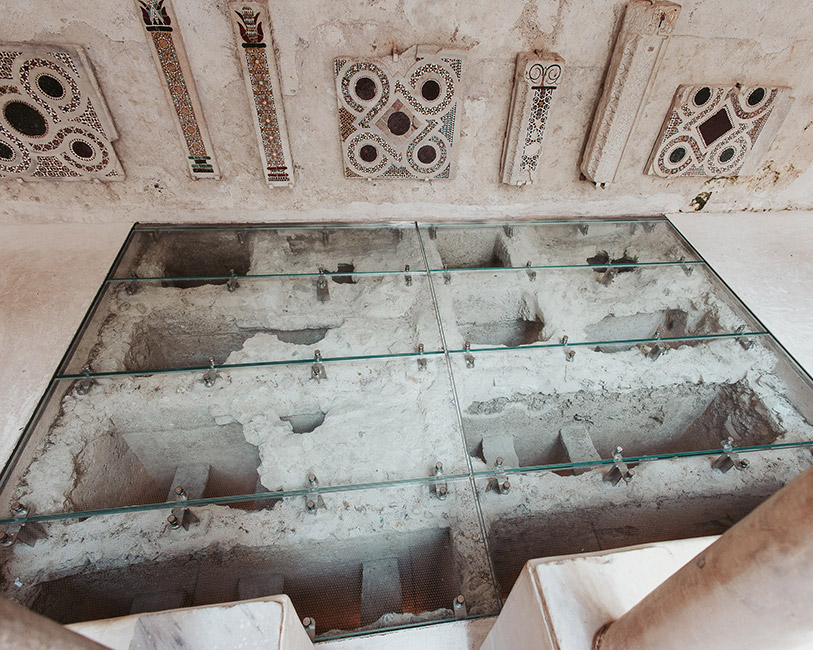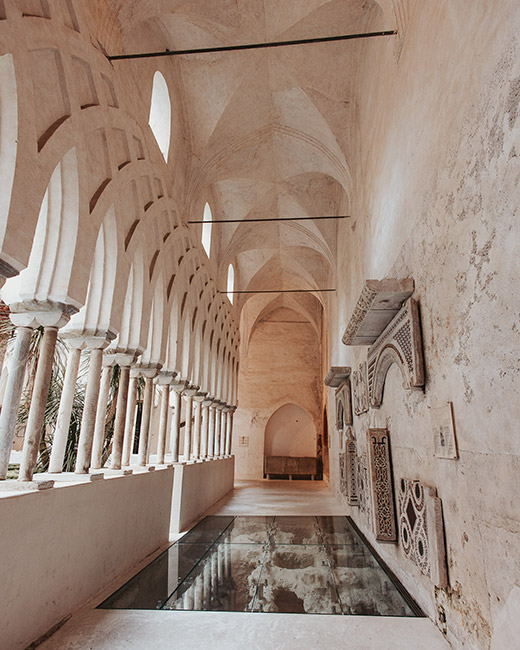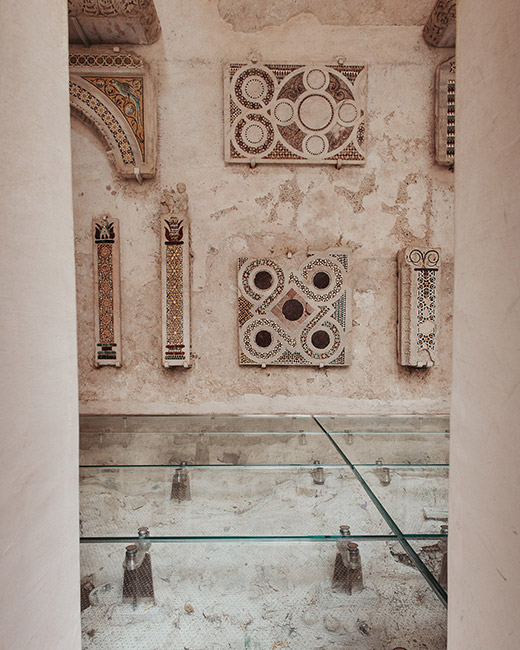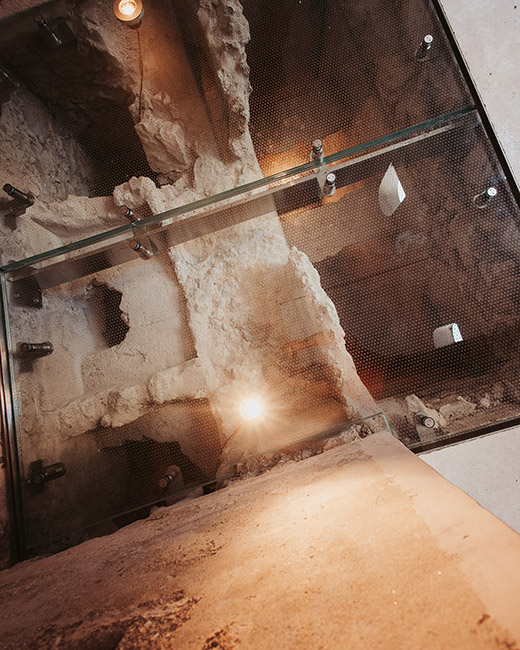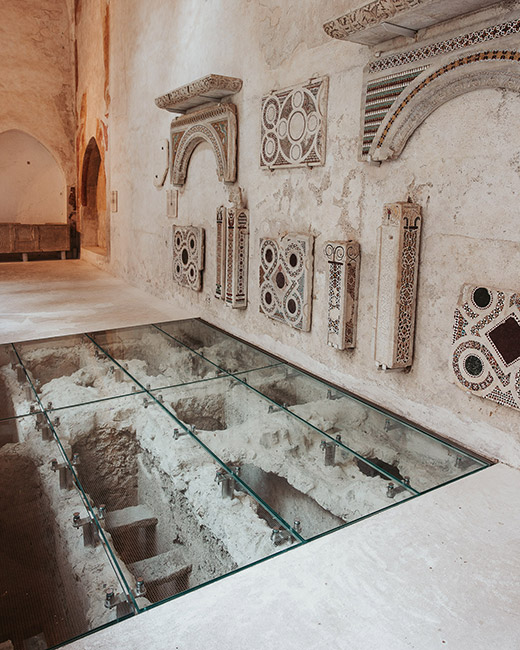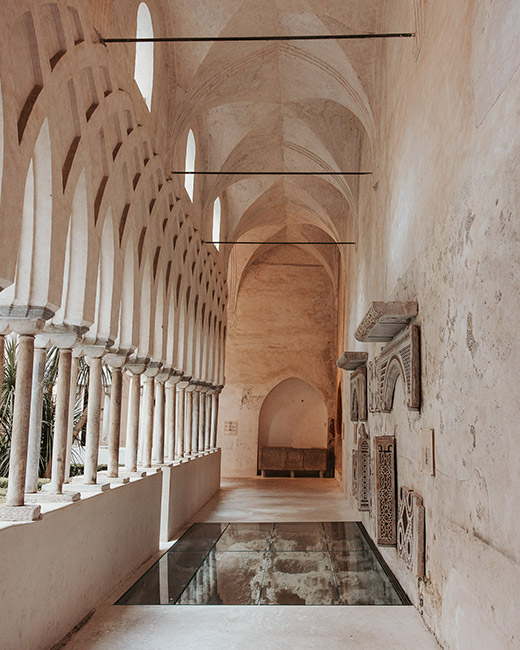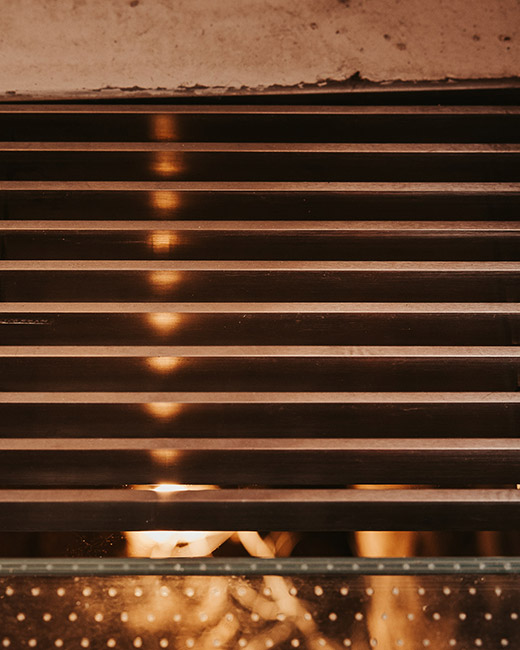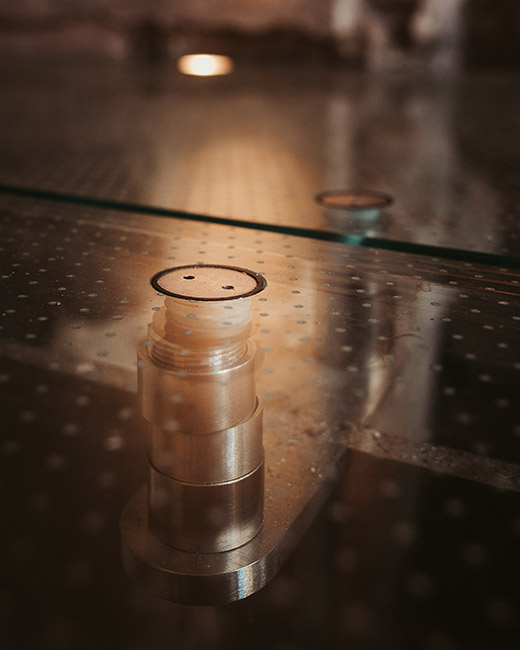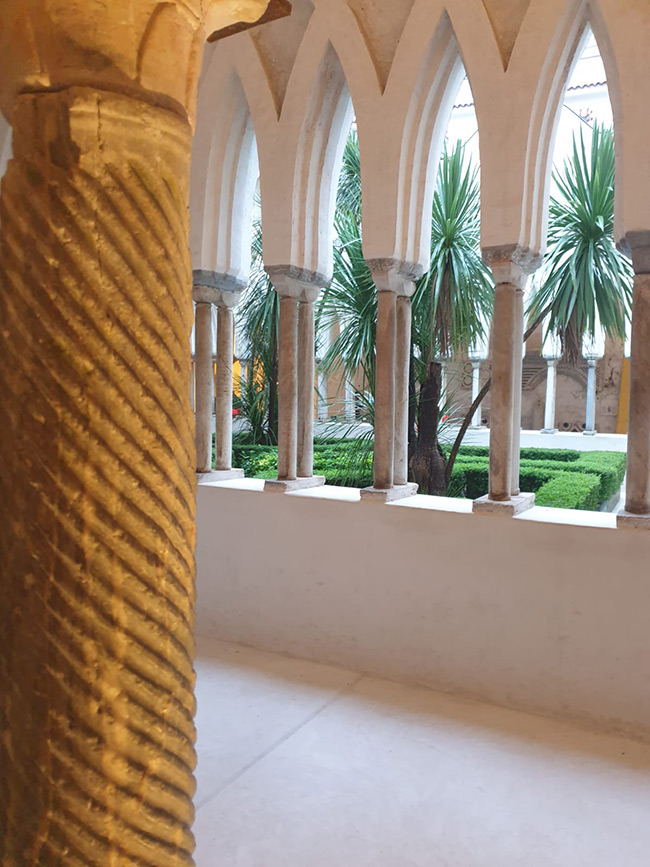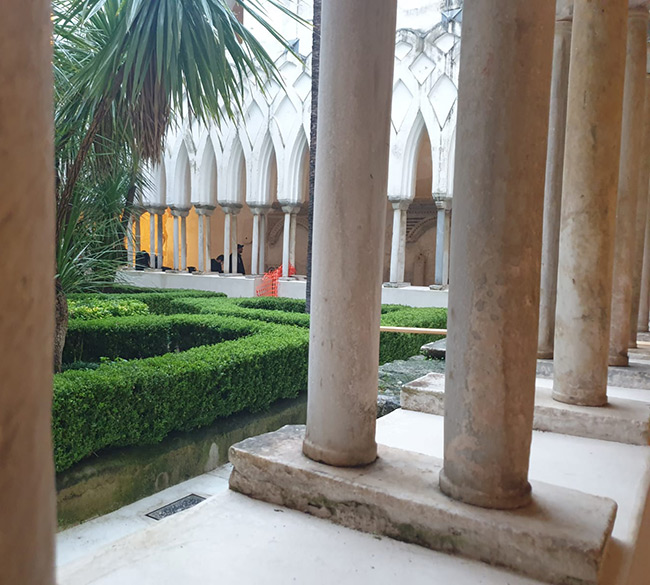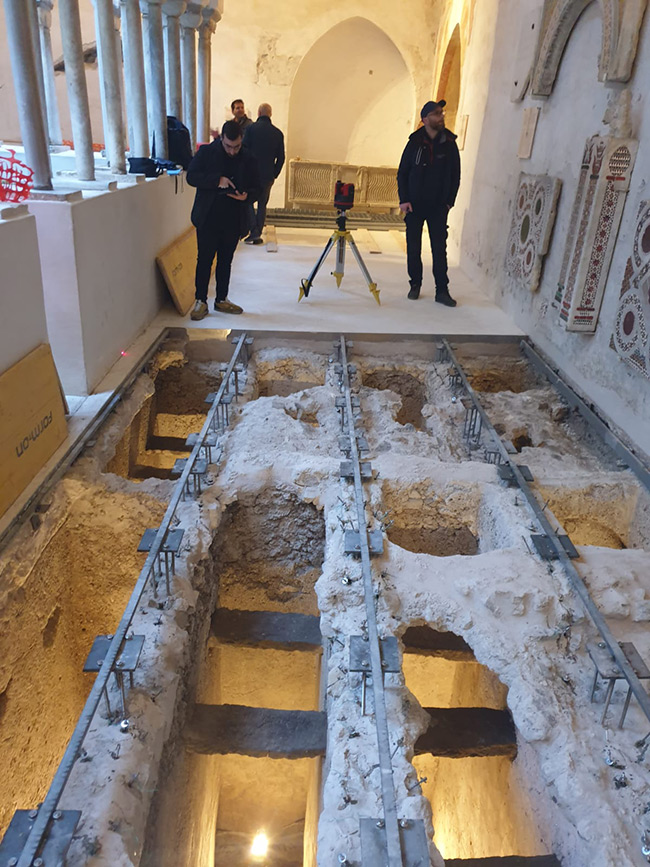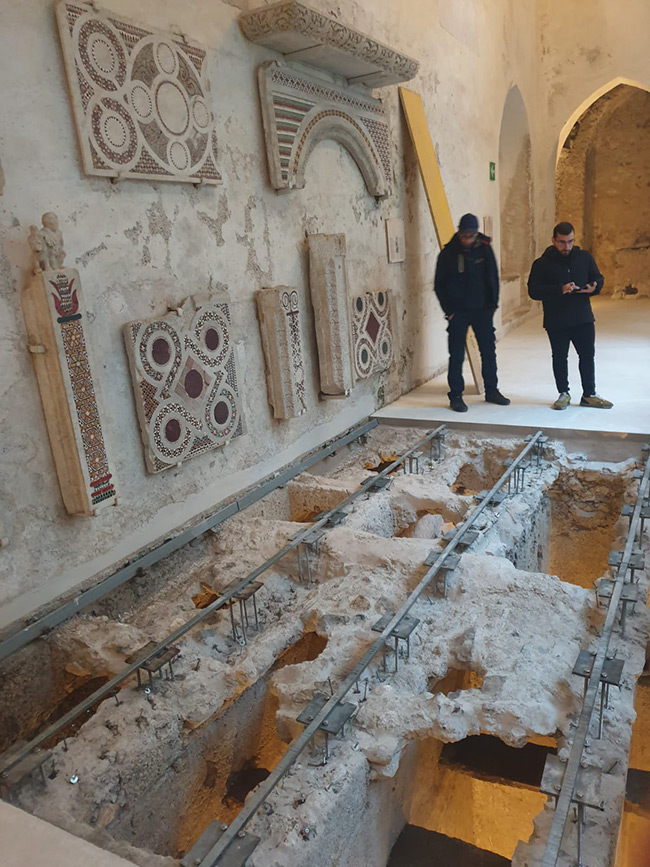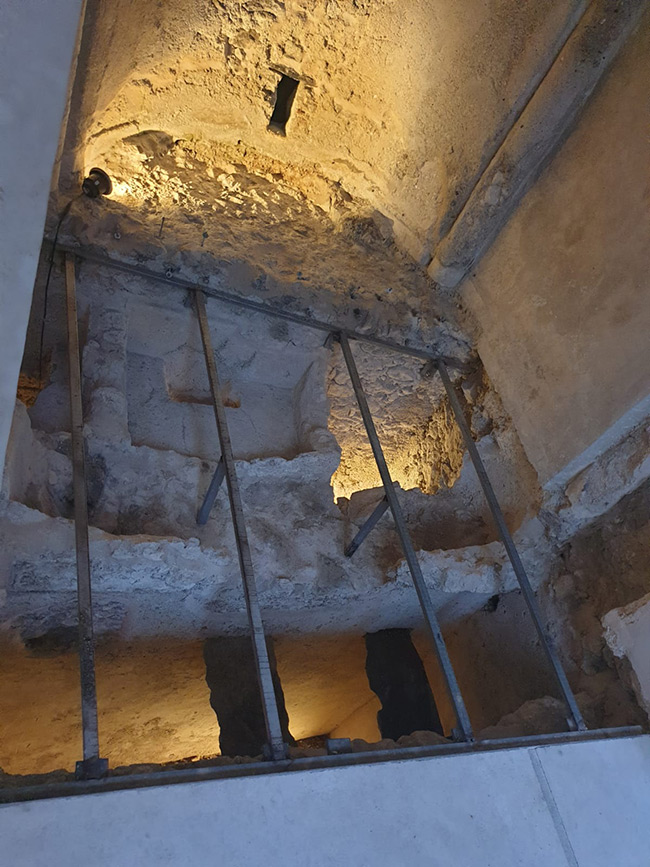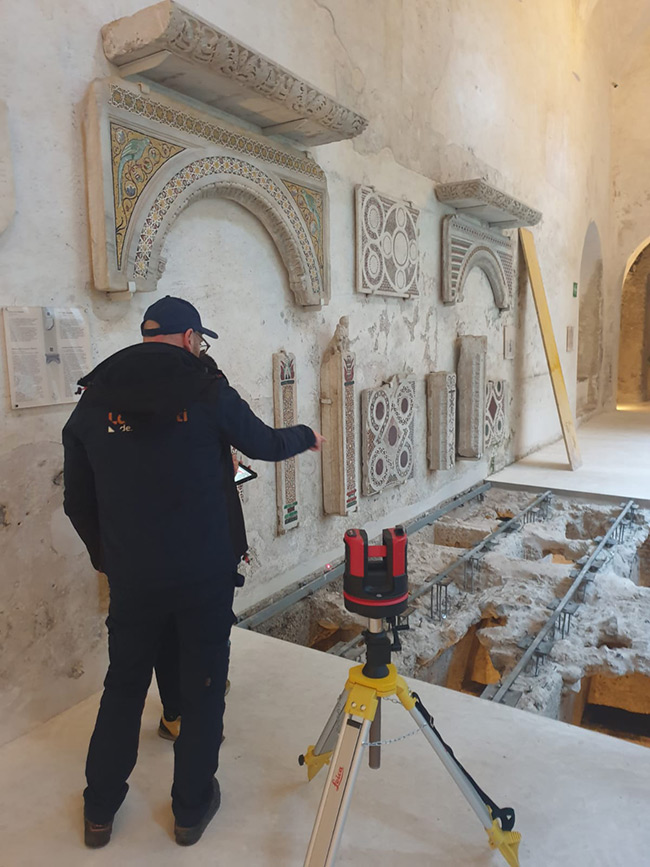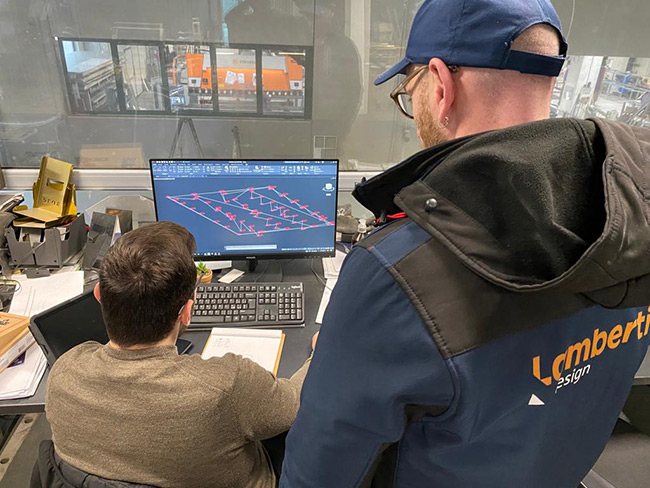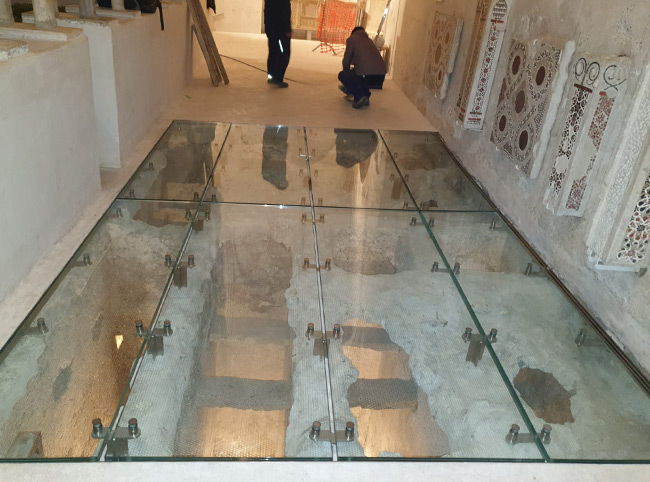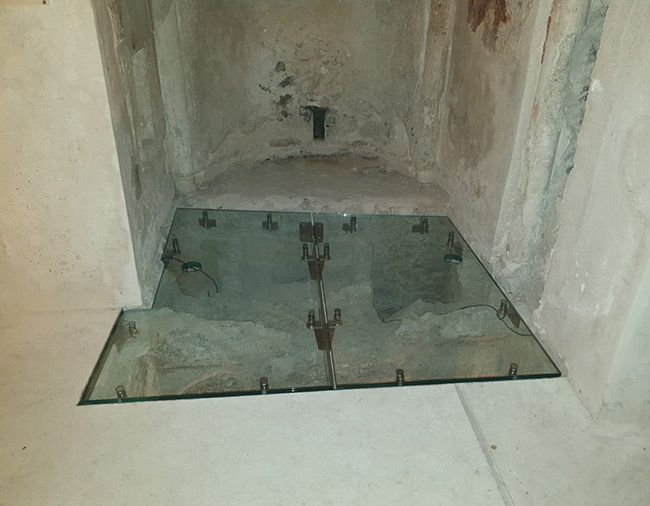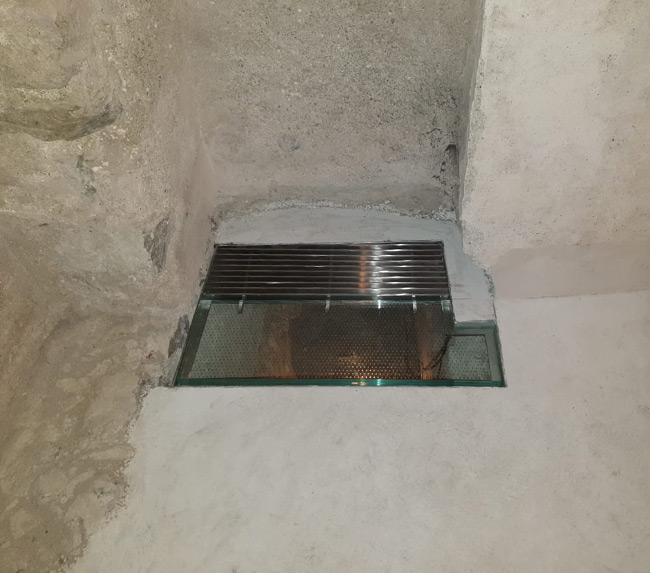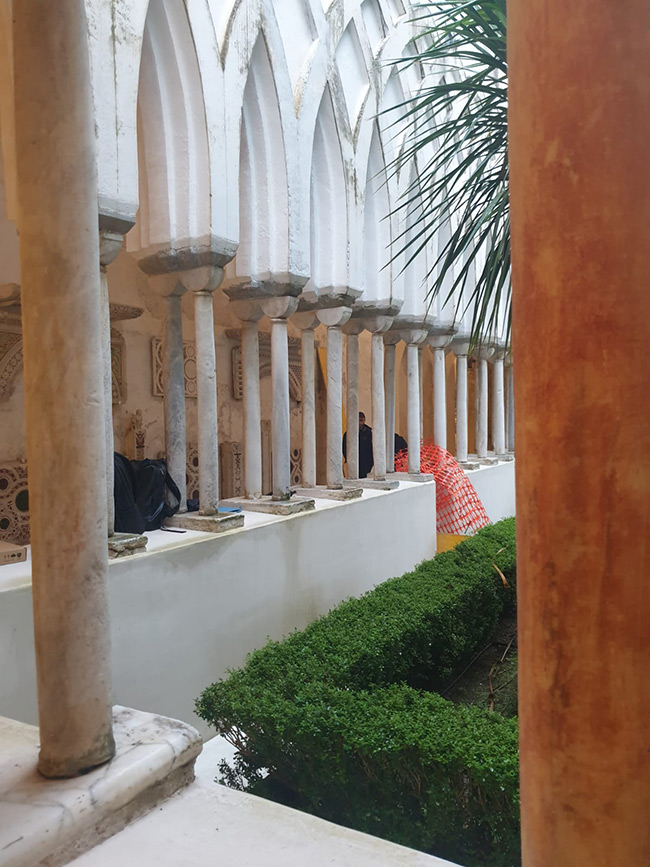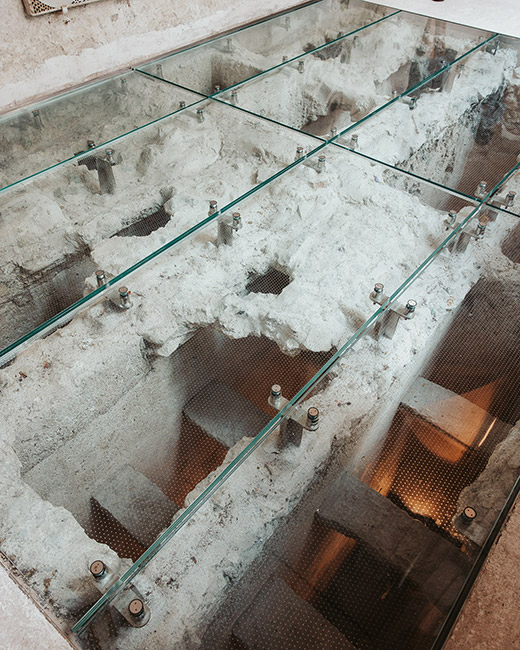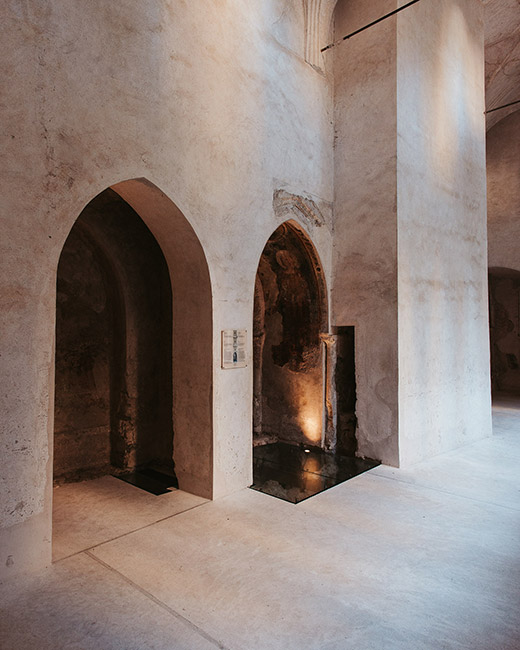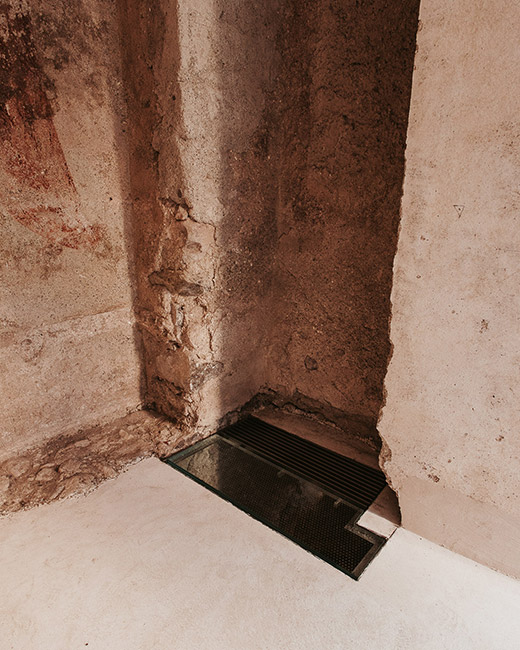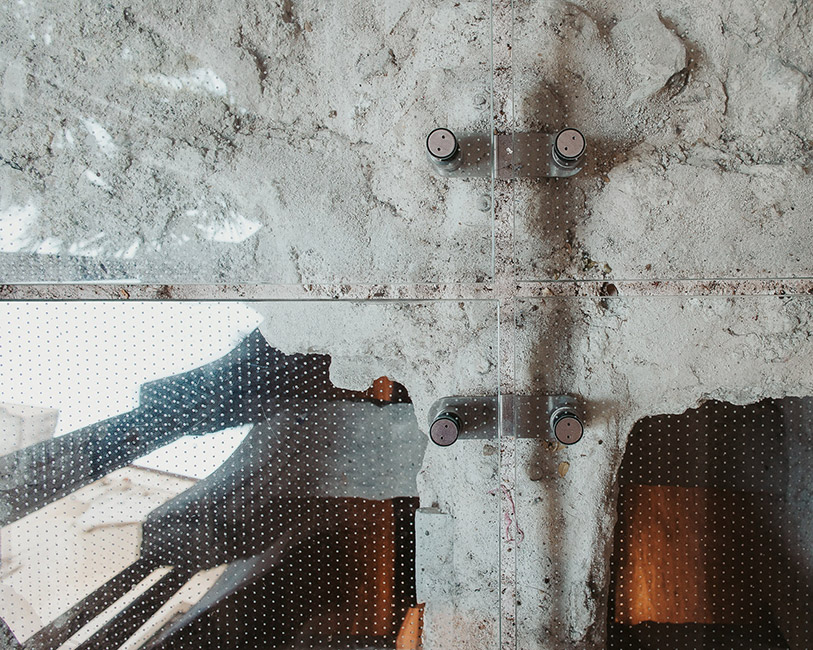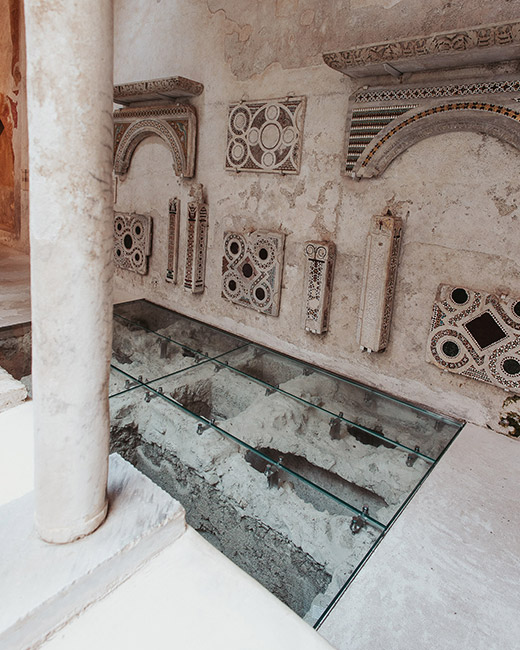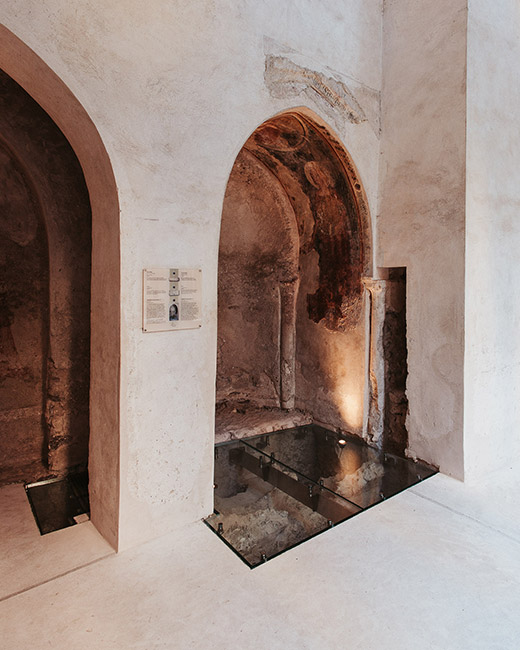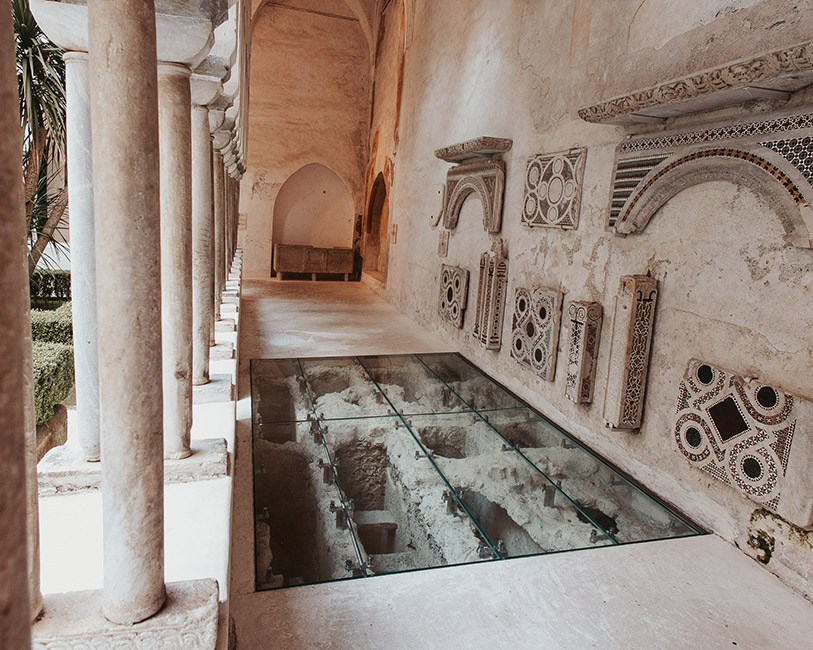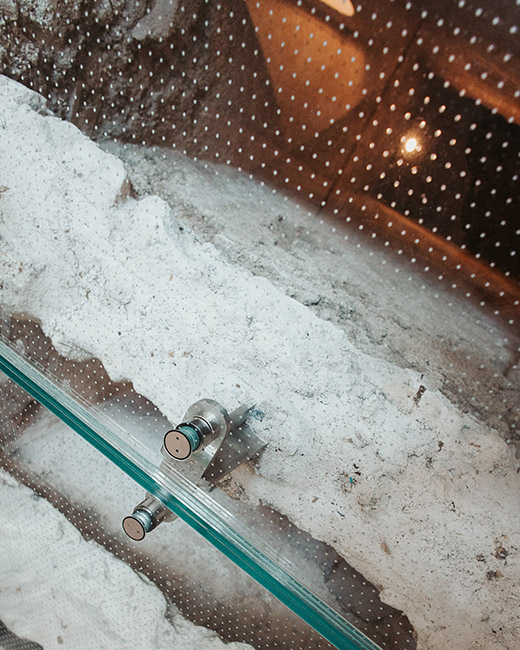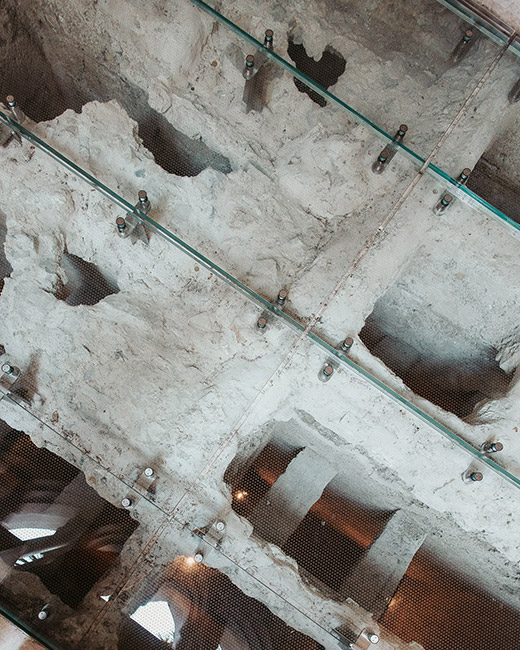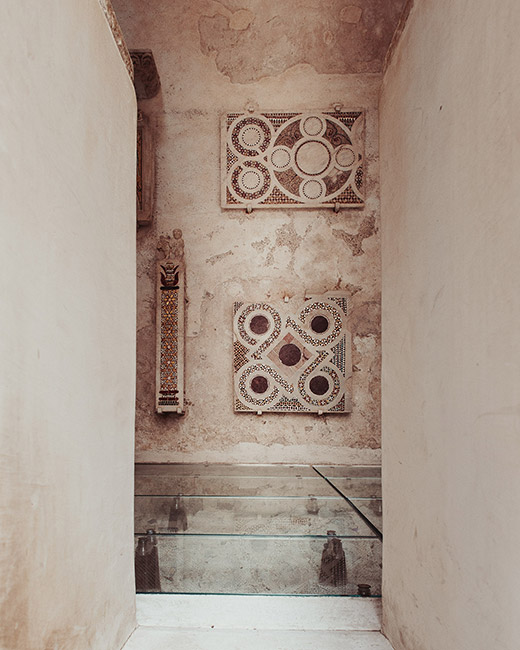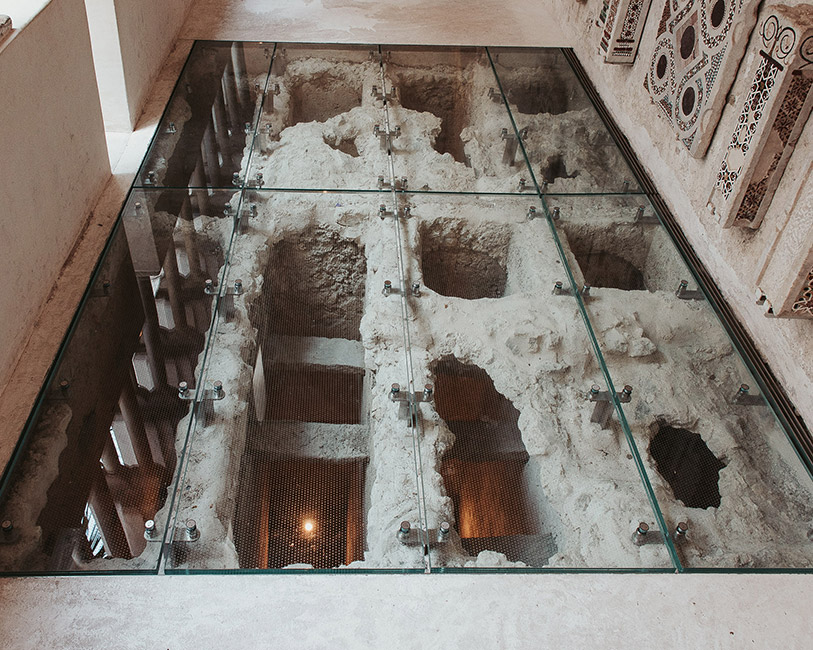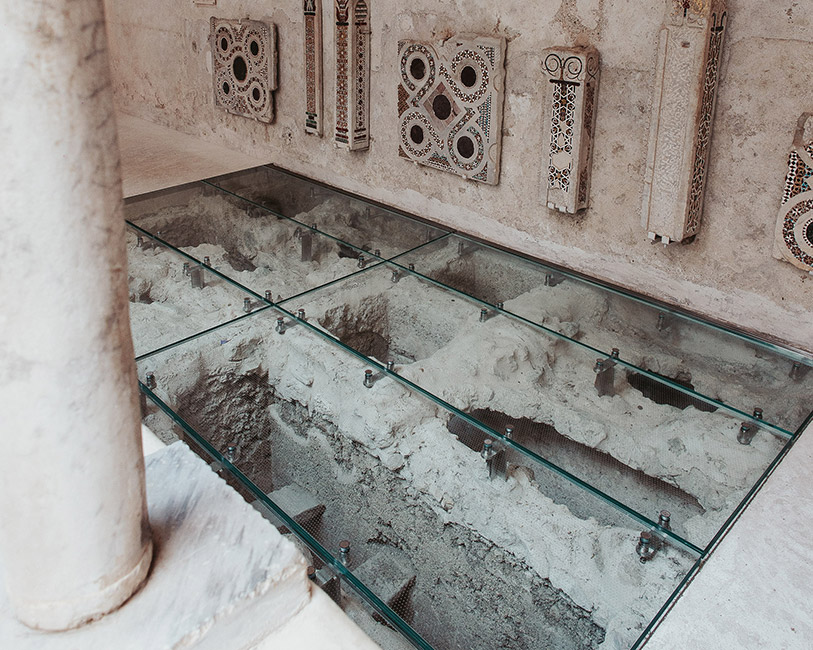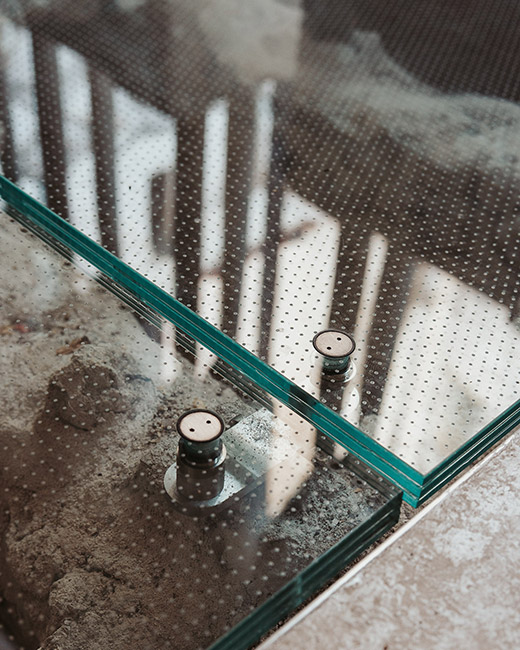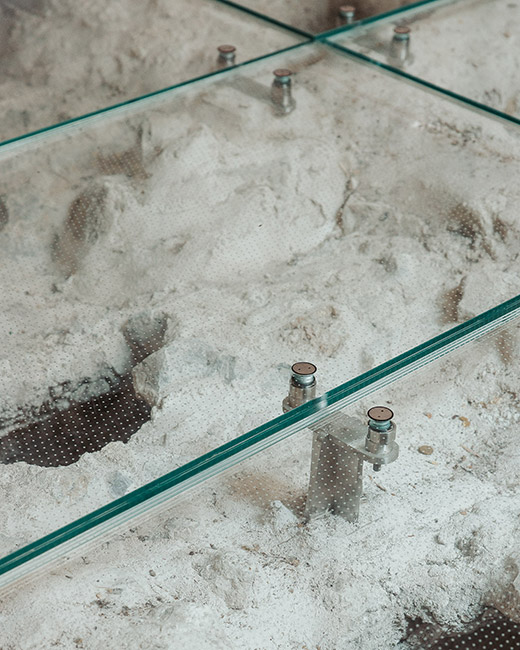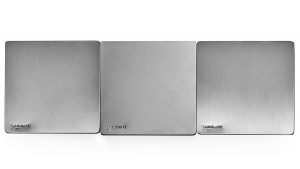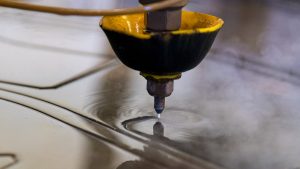Diocesan Museum of Amalfi
Designer
- Arch. Guarino
Location
- Amalfi
Year
- » 2023
In the Chiostro del Paradiso of the Diocesan Museum of Amalfi, the singular catacombs were brought to light, now visible through a walkable non-slip flooring installed by Lamberti Design.
The cloister is the ancient cemetery of the nobles of Amalfi, it was built between 1266 and 1268. We read on the museum website “Art with its beauty makes us feel closer to God. In the Cloister we enjoy the charm of these unmistakable intertwined arches, supported by 120 slender columns, with a strong oriental feel. Along the left side of the cloister’s gallery, a candid peristyle from whose arches the green of the small Mediterranean garden leaks inside, various sarcophagi are displayed, among which those depicting the Rape of Proserpina and the Union of Mars with Rhea Silvia from the second half of the 2nd Century d.C.
On the same side you can admire the marble fragments with mosaic decorations of the ancient ambos of the cathedral, commissioned by Archbishop Dionisio (1174-1202) and made by artists active in Amalfi itself. Continuing the visit, we can stop for a moment in the center of its North side to take a shot of the bell tower of the cathedral (1180-1276) with the bell tower decorated with polychrome majolica tiles in the Moorish style. The funerary chapels of the cloister are visible at the bottom”.
The extra-clear triple glass flooring with certified anti-slip is installed on the West side of the cloister and in the Chapels of Sant’Andrea and San Teodoro on the Northern side. The pillars in stainless steel AISI 316 have fixing rotulle with fine millimeter adjustment for a precise punctual fixing of the glasses. Near the chapels, we also find shaped ventilation vents. The Lamberti Design Technicians carried out the survey with a 3D Disto. The drawings were then worked and engineered. The result were pillars of various heights adapted on the existing walls. After the production of the pillars was completed, the various components were then satined and installed. Lamberti Design technicians carried out a final survey to produce the glass slabs finally installed in one day.
- pavimento in vetro antiscivolo
- pavimento in vetro calpestabile antiscivolo
- pavimentazione per scavi archeologici
- pavimentazione per musei
- non-slip glass floor
- certified non-slip glass floor
- silk-screened non-slip glass floor
- transparent glass floor
- non-slip walkable glass floor
- flooring for archaeological excavations
- flooring for museums


